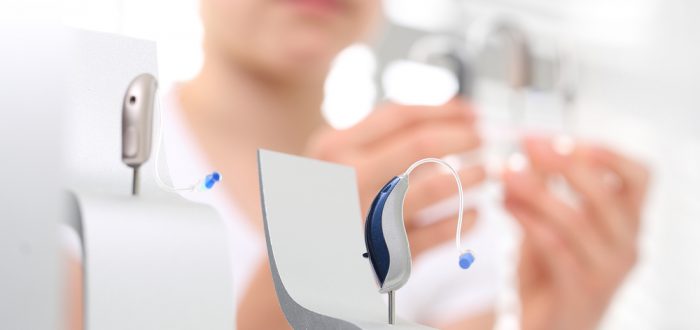High frequency hearing loss (also known as high-pitch hearing loss), is one of the more common types of hearing loss. Mosby’s Medical Dictionary defines high frequency hearing loss as a “loss of ability to hear high-frequency sounds, most commonly associated with aging or noise exposure.”
These high-frequency sounds are in the upper end of frequencies, those 2,000 Hz or higher. Many components of our speech patterns fall in the high-frequency range, particularly consonants or hissing sounds such as “f”, “s” and “sh”. As a result, people with high-frequency hearing loss often have difficulty understanding certain elements of speech.
Most age-related hearing loss (presbycusis) occurs in the high-frequencies. This is why women and children can be particularly difficult for people with age-related hearing loss to understand.
In recent years, advances in technology have led to many breakthroughs in the treatment of hearing loss. Hearing aid devices are increasingly sophisticated, and able to help with a variety of different types of hearing loss.
To help provide improved hearing to people with presbycusis, most hearing aids will amplify high-pitch sounds. However, due to the type of damage in the inner ear and associated distortion of sounds in severe cases, amplification can lose its effectiveness.
Many hearing aid manufacturers have developed a solution to this concern. High-pitch speech can be shifted down to the lower pitch ranges. This improves the ability of people with high-frequency hearing sounds to hear the missing components of speech by stimulating a healthier part of the inner ear.
What is Frequency Compression?
A report published in The Hearing Journal defines frequency compression as: “ High-frequency sounds (e.g., 4,000-8,000 Hz) are squeezed into a smaller frequency range (e.g., 4,000-6,000 Hz) above a certain frequency, called a frequency compression threshold (4,000 Hz in this example).”
Put simply: frequency compression involves taking sound from one pitch to another. This helps to improve the ability to hear certain speech sounds. Frequency compression can be a significant asset in a hearing aid device.
What is Frequency Compression in Hearing Aids?
frequency compression in hearing aids involves modifying the pitches delivered by: compression, shifting, transposing, stacking (or a combination of these strategies). It is a useful, but often unknown feature in a variety of hearing aid devices.
For example, Oticon has developed the ‘Speech Rescue’ design, available in many of their hearing aid models. They describe the process as:
“The processor simply copies segments of high-frequency sound and moves them into a lower audible frequency range. The part of the spectrum where sound moves from is the source region, and the part where it moves to is the destination region. The goal is to provide the patient with as much high-frequency information as possible. This means that, in principle, the source region should cover the entire speech spectrum that is unusable to the patient.”
While this technology broadens the range of treatment capabilities, frequency compression hearing aids are not a universal solution for everybody with hearing loss. How severe your hearing loss is, and how recent your hearing loss diagnosis, are both taken into account in determining management options.
Consult with the Hearing Care Professionals at Kenwood Hearing Center
If still have questions about your hearing aid, we can help you. Contact us today and schedule an appointment at one of our convenient Ohio hearing center locations: Bowling Green, Toledo, or Wauseon.
